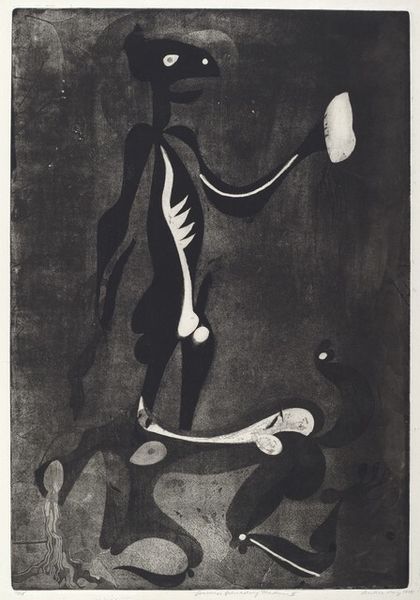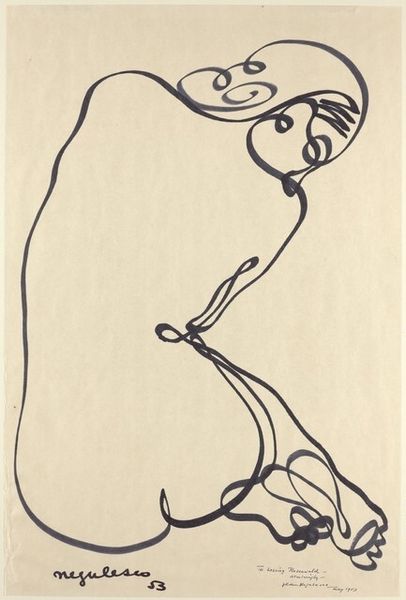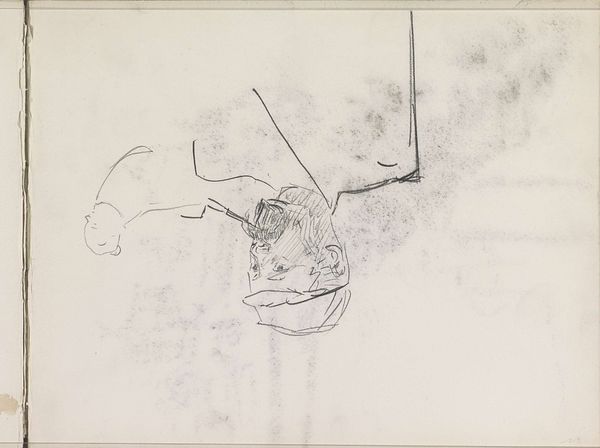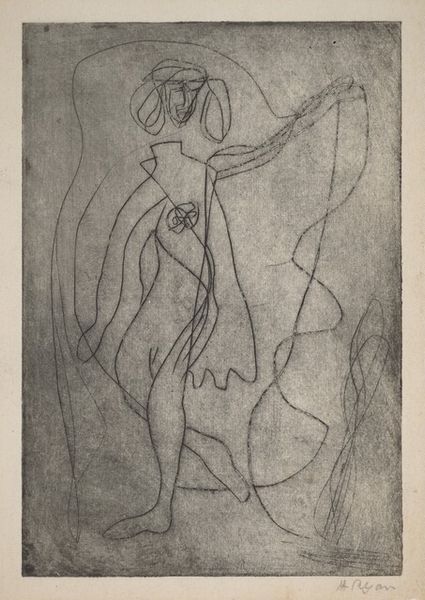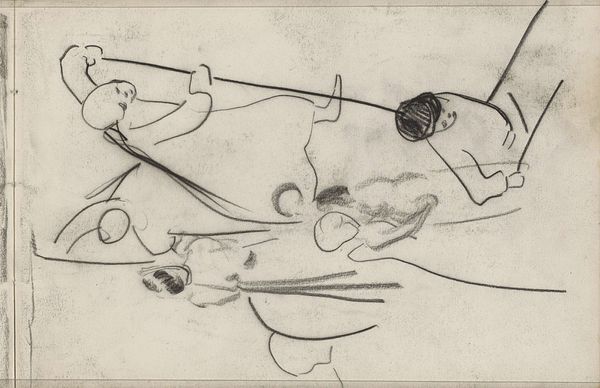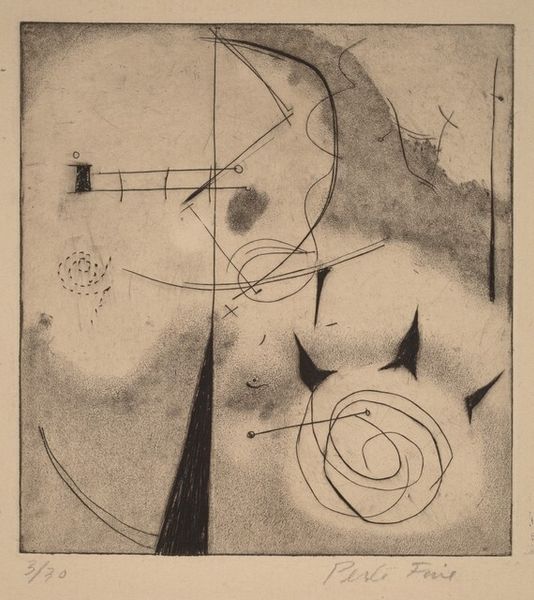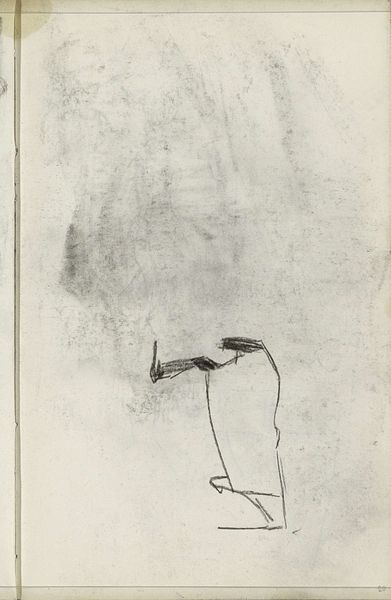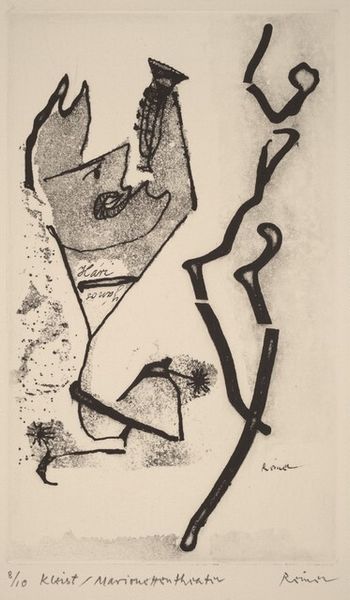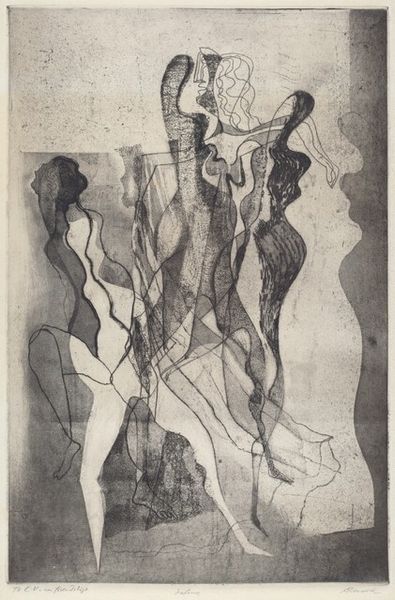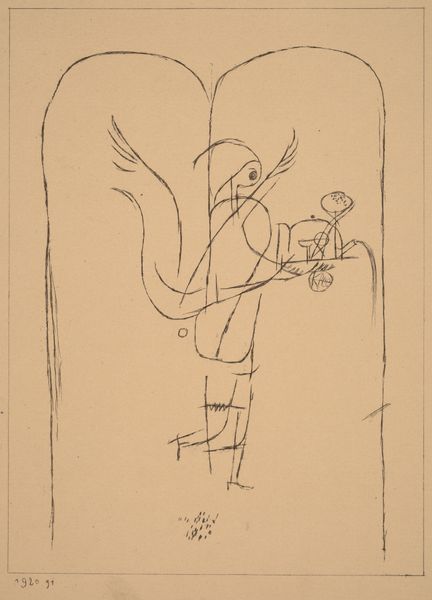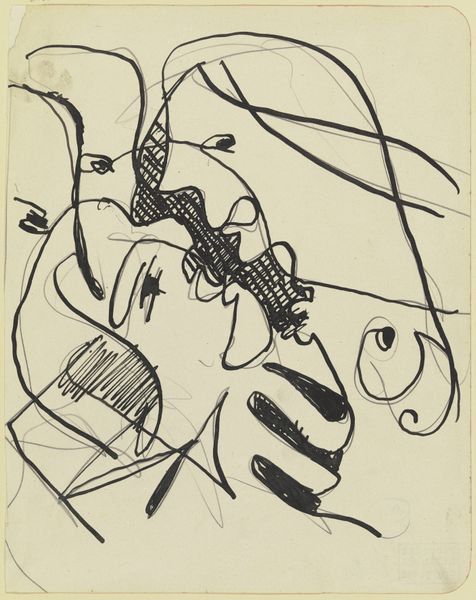
Dimensions: image: 300 x 196 mm support: 375 x 277 mm
Copyright: © The estate of Richard Hamilton | CC-BY-NC-ND 4.0 DEED, Photo: Tate
Curator: Richard Hamilton's "Self-portrait" offers a rather stark vision, wouldn't you say? Editor: It’s quite striking. The neutrality of the etching technique, the limited palette, and the use of abstract symbols—it feels incredibly modern, almost detached. Curator: Exactly! Hamilton, a key figure in British Pop Art, was deeply engaged with examining how identity is constructed, or perhaps deconstructed, through image and symbol. It's a portrait, but also a commentary. Editor: And consider the materials. The starkness of the etching emphasizes the production process. The lines are so clear, almost diagrammatic. What do you make of that choice? Curator: It distances the personal. Hamilton is playing with how we perform identity, how we present ourselves, through codes and signifiers readily available within a broader cultural landscape. Editor: I find it fascinating how the choice of process amplifies the message of the work. Curator: Indeed. It's a powerful engagement with the self and society. Editor: A very thought-provoking piece!
Comments
Join the conversation
Join millions of artists and users on Artera today and experience the ultimate creative platform.
tate 6 months ago
⋮
These prints, with their tentative shapes resembling amoebae, anemones and other forms of microscopic life, were made in response to D'Arcy Wentworth Thompson's book on morphology On Growth and Form (1917). The book was a scientific study of the forms in nature, which argued that recognisable mathematical structures can be found in all organisms. The print titled Heteromorphism was used as the cover of a catalogue for Growth and Form, an exhibition inspired by Thompson's theories, which Hamilton and Nigel Henderson organised in 1951, when they were both studying at the Slade School of Art. (See display cases). Gallery label, August 2004
